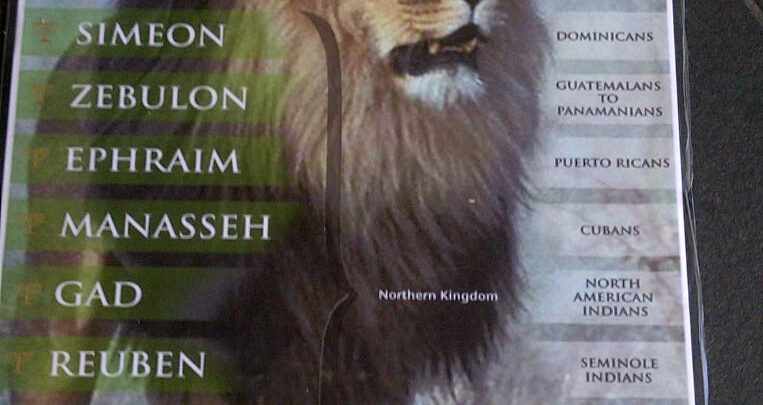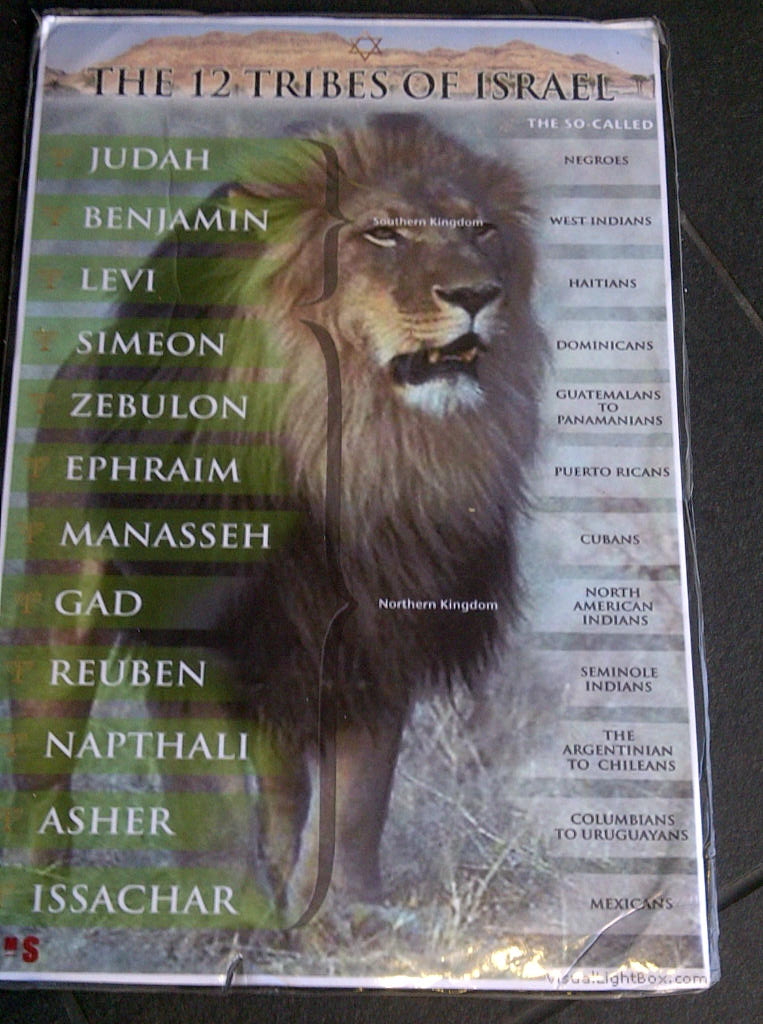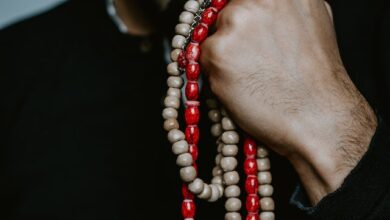What are 12 Tribes of Israel

The sons of the Jewish patriarch Jacob are referred to as the 12 Tribes of Israel, and they are significant for the tribal histories of individuals who made up the country of Israel.
All ethnic groups in the ancient world created foundation myths about their ancestors because bloodlines were crucial for preserving ancestral heritage and providing status as identification markers.

The twelve sons of Jacob, in order of their birth, are:
- Reuben
- Simeon
- Levi
- Judah
- Dan
- Naphtali
- Gad
- Asher
- Issachar
- Zebulun
- Joseph (Manasseh, Ephraim)
- Benjamin
The practice of primogeniture, in which the oldest son receives the majority of his father’s wealth, and subsequently division based on the rank of the remaining sons, was dependent on birth order.
In the biblical story, Manasseh and Ephraim received Joseph’s inheritance following his death in Egypt.
Later, the status of each son was arranged in the Canaanite tribal territory that they were given. Undoubtedly, Jacob had further daughters, but only Dinah is named (see below).
Also Read: Black Jews in Isreal
Jacob
A NEW NAME WAS GIVEN TO JACOB: “ISRAEL,” which means “ONE WHO STRUGGLED WITH THE DIVINE ANGEL OR WITH GOD AND LIVED.” Consequently, ALL OF HIS DECENDANTS GREW UP AS ISRAELITES.
Isaac and Rebecca had a younger son named Jacob. Isaac was the offspring of the promise made to Abraham, the nation’s traditional founder, by the God of Israel.
Jacob had to escape to Haran (Northern Iraq), where some of Abraham’s kin still remained, after stealing his brother’s birthright (as the eldest).
He ran across Rachel at the well and requested Laban, her father, for Rachel’s hand. Jacob was forced to initially serve Laban for seven years.
He did so, but the wedding night made it clear that Leah, the older sister, was the one who had been given. Laban overruled Jacob’s objections by ordering him to work another seven years in order to obtain Rachel as well.
The Story
The story then goes into quite a bit of detail about Jacob’s offspring. Leah first gave birth to a few boys while Rachel remained childless.
Then Rachel proposed her servant to Jacob (an ancient form of surrogate motherhood in the case of infertility).
After a period of being infertile, Leah also offered her servant. All of this activity was a reflection of later legends that explained how and why particular tribe regions in Canaan were passed down to the sons.
It had to do with who their moms, Leah and Rachel, and the two domestic helpers, Bilhah and Zilpah, were.
| Leah | Rachel | Bilhah | Zilpah |
|---|---|---|---|
| Reuben | Joseph | Dan | Gad |
| Simeon | Benjamin | Naphtali | Asher |
| Levi | |||
| Judah | |||
| Issachar | |||
| Zebulun |
Jacob was attacked at night by a creature with whom he struggled on his way back, wanting to go home and make amends with his brother.
A man, God, or an angel is described in several retellings. After asking for a blessing, Jacob was given a new name: “Israel,” which means “one who fought with the holy angel or with God and lived.”
So all of his offspring adopted the Israelite religion.
Also Read: The 42 Laws of Maat in Kemet’ (The Original 10 Commandments of the Bible)
The 42 Laws of Maat in Kemet’ (The Original 10 Commandments of the Bible)
At Canaan
Following their return to Canaan, Jacob and his children are the subject of a couple additional tales in Genesis. Leah and Jacob’s daughter Dinah was born.
She traveled to Shechem to see some women. Shechem, the son of the local chief Hamor, grabbed her and sexually assaulted her. Shechem begged his father to get Dinah from Jacob because he loved her (34:6-10).
Hamor, Shechem’s father, stepped outside to speak with Jacob after that. As soon as Jacob’s sons learned what had occurred, they immediately returned from the fields.
They were astounded and indignant because Shechem had engaged in behavior that was unacceptable in Israel by having a sexual relationship with Jacob’s daughter.
Hamor however informed them, “You can intermarry with us; give us your daughters and take our daughters for yourselves. You can settle among us; the land is open to you.
Live in it. Trade in it. Acquire property in it. My son Shechem has his heart set on your daughter; please give her to him as his wife (34:6-10)
Simeon and Levi insisted that Shechem undergo the rite of circumcision first because their sister had been defiled;
Hamor and Shechem agreed and persuaded all the Shechemites to do the same; three days later, “while all of them were still in pain” (Genesis 34:25).
Simeon and Levi slaughtered Hamor, Shechem, and the entire clan, looting their villages. Some modern scholars believe this story was added later, with Jewish ideas of impur
Joseph
Because of his love for Rachel, Joseph and Benjamin were Jacob’s favorite sons. Joseph was a dream interpreter and shared a dream in which his brothers encircled him and bowed to him.
When a caravan came along on its way to Egypt, they sold Joseph into slavery.
They took the special robe Jacob had made for Joseph, covered it in blood, and told Jacob that Joseph was dead. Rachel died in childbirth with Benjamin.
When there was a famine in Canaan, Jacob sent his sons to Egypt to bargain for food.
They did not recognize Joseph, who played several pranks on them, but eventually, he forgave his brothers and told them to bring the clan to Egypt.
They prospered in Egypt until a Pharaoh arose who did not remember Joseph and enslaved the Israelites to build his grain cities. This established the story of how the Twelve Tribes moved to Egypt.
Jacob’s Blessings on His Deathbed
Deathbed blessings were respected (as engraved in stone) and were used as a literary technique to foretell future events:
“Deathbed blessings were honored (as carved in stone) and were used as a literary device to forecast future events:
Reuben, my firstborn, my might, the first sign of my strength, excelling in honor and power, will no longer excel because you went up onto your father’s bed, onto my couch and defiled it.
[There was an earlier story that Reuben had sex with his father’s concubines (second, legal marriages)]. Simeon and Levi are bragging rights, and Reuben is bragging rights ” (Genesis 49:1-10)Up until the final son, it goes on. Again, the blessings are a reflection of later customs that developed after the tribes were established in the area.
Reuben ought to have received leadership duties as the firstborn, but he disobeyed his father. The tribe of Shechem was massacred by Simeon and Levi.
This blessing explains why King David, Judah’s descendant, who was the fourth son, received the promise to reign over the other sons.
Levi did not inherit any land, yet Moses and Aaron were descended from him. The first high priest was Aaron.
When the Temple was constructed in Jerusalem, the Levites replaced the landowners as the Temple’s staff.
The Levites were to be supported by all the other tribes, who were not to cultivate the land, by sacrifices of meat, bread, and wine. Additionally, the land’s towns of refuge were given to the Levites.
Also Read: Ancient Egytian Gods and Goddess
Confederation of Tribes to Babylonian Exile
After the Jews fled Egypt, the conquering and settling of Canaan are described in the books of Joshua, Judges, and 1 Samuel (Exodus).
According to legend, the Jews were instructed not to be like other peoples at Mount Sinai. This also related to governing; since God was Israel’s king, there was to be no human monarch.
When the Israelites arrived in Canaan, they ruled through a confederation of tribes. This was a cooperative effort to plan conflicts with the Canaanites and subsequently Philistines.
The Ark of the Covenant was then kept by the Israelites in a transportable tent of meeting (containing the stones tablets of the laws that God gave Moses on Mt. Sinai).
The tent was moved around the several tribal areas in order to prevent rivalry and any tribe asserting supremacy.
The sources and tales of the tribes throughout this time period came from these many cult locations, including Shiloh.
The people pleaded with the Prophet Samuel to “grant us a ruler” because the Tribal Confederation was unable to defeat the Philistines (1 Samuel 8:5).
When Saul, the first king, was assassinated, the tribes chose David to succeed him since Saul wasn’t a good role model.
The Beginning of Confederation
This time was seen as a golden age and became known as the unified monarchy. The first Temple complex was erected in Jerusalem, the new capital, by his son Solomon.
Solomon was known for his wealth and intellect, but his building projects enlisted labor from the tribes.
The tribes contacted Solomon’s son to ask him to put an end to the custom after his death (about 920 BCE). He declined.
In Northern Israel, ten of the tribes broke away and established their own country. Judah and Benjamin, two steadfast tribes, established their own empire in the South (the kingdom of Judah).
For the following 200 years, these kingdoms occasionally banded together to repel foreign invaders but frequently engaged in war with one another (2 Kings, and 1 & 2 Chronicles).
The only tribes that survived were the two southern tribes, Benjamin and Judah.
Also Read: The Ancient Egytian Culture, History & Religion
The Fall
The Assyrian Empire invaded and destroyed the Northern Kingdom of Israel in 722 BCE.
The Assyrians had a strategy in place to put an end to any potential uprising from a conquered land. By expelling the Israelites and bringing in their own people, they traded whole populations.
These twelve tribes’ final resting place and chances of survival are yet unknown. They eventually turned into Israel’s 10 lost tribes, forgotten by time.
The Neo-Babylonian Empire overthrew the Assyrian Empire. In 587 BCE, the Babylonians seized control of Jerusalem and the Southern Kingdom and demolished Solomon’s Temple.
The prisoners were sent to Babylon under a similar foreign policy. The Babylonian Exile is the name for this time frame (being exiled from the land).
Cyrus the Great, the founder of the Achaemenid Empire (r. 550–530 BCE), allowed the Jews to return and rebuild their Temple after defeating the Babylonians (539 BCE)
The only tribes to survive were the two southern tribes, Benjamin and Judah.
The Books of the Prophets
The oracles, or channels through which the ancients interacted with their deities, were the prophets of Israel. God used prophets to give instructions, forewarnings, and specifics about social justice.
We can discover an explanation of why God allowed these catastrophes in the Prophetic texts.
Foreign nations were employed by God to chastise Israel for its transgressions, the worst of which was allowing idolatry in the country.
The Prophets also conveyed a message of hope that God will finally make another appearance in human history, during “the end days” (eschaton in Greek).
God would send out a messiah (the “anointed one”) who would be a Davidic ancestor. A last struggle and a final verdict would take place at that point.
The pious would enjoy a new Eden on earth, which was God’s original design for humanity, while the wicked would be sent to Hell.
At that time, Israel would once again be glorious, and the other countries would submit to its rule. The twelve tribes of Israel being restored and collected from far-off regions was a recurring subject in this.
Also Read: Yoruba Ifa Religion and the Sacred Ifa Oracle
Ezekiel, the prophet, said:
They will forget their shame and all the unfaithfulness they displayed toward me when they lived in safety in their land with no one to make them afraid.
Therefore, this is what the Sovereign Lord declares: “I will now bring Jacob back from captivity and will have compassion on all the people of Israel and I will be zealous for my holy name.
When I have brought them back from the nations and have gathered them from the countries of their enemies, I will show myself holy through them (39:25-29)
Alexander the Great (reigned from 336-323 BCE) established Greek government in 330 BCE after he had conquered the Eastern Mediterranean, including Israel.
Greek dominance was ended by the Maccabean Revolt (167–160 BCE), and Jewish rule continued for almost 100 years till Rome invaded Israel in 63 BCE.
Several self-declared messiah figures pleaded with God for immediate action at this time, which contributed to an upsurge in Israelite optimism. During this time, the notion of Israel’s restoration saw a revival.
Christianity
Jesus of Nazareth, according to Christians, was the Messiah foretold by the Prophets. In addition to the Prophets’ message, he also stressed the imminence of God’s reign in his sermons.
Twelve disciples, or “students” in Greek, who stood for the twelve tribes of Israel, were called during his ministry.
The names in the gospels don’t always correspond, and Luke said there were an additional 70 people. They are always referred to as “the twelve,” nonetheless.
Their function in the upcoming kingdom is made clear in Luke’s account of the Last Supper: “You are those who have stood by me in my trials, and I confer on you a kingdom, just as my Father conferred one on me, that you may eat and drink at my table in my kingdom and sit on thrones, judging the twelve tribes of Israel” (Luke 22:28-30).
Luke used the Ezekiel quotation (above) in his account of the Pentecost event in the Acts of the Apostles. Pentecost was being celebrated in Jerusalem, and Jews (“from every country on earth”) were there.
It was at this time that “the spirit of God” was poured forth onto Jesus’ disciples. The 144,000 martyrs in heaven are mentioned by John of Patmos in the book of Revelation (12 x 12 = 144).
The names of the twelve tribes of Israel are inscribed on the city gates in his vision of the rebuilt Jerusalem (21:12-13).
Also Read: Where is Ark of the Covenant & What is in the Ark of the Covenant
Trying to find the Lost Tribes
Anciently and still, people have been looking for Israel’s 10 lost tribes. Writings from the late antiquity and the Middle Ages mentioned sites in Africa, particularly Ethiopia, which had a Jewish presence, as well as regions to the east of Israel.
Ethiopia’s Beta Israel group identified itself as a branch of the Dan tribe. Later, during Operation Solomon at the end of the Eritrean/Ethiopian civil war in 1991, these Jews were flown to Israel.
As Jews in Russia and Europe were occasionally persecuted, the dream of a homeland (Zionism) emerged as a crucial idea that encompassed strategies for bringing back all the exiled tribes.
The Assyrian Empire covered a huge area that stretched from Syria to Afghanistan, from northern Arabia to the Black Sea, and from southern Russia.
It was subsequently subdued by the Babylonians and then the Persians. It was believed that the tribes may be discovered among the many inhabitants of this area since the region was home to the Silk Road, the caravan routes between China and India.
The Scythians or the Cimmerians were said to have been ancient Jews who embraced tribal traditions; from these locations, tribes ultimately expanded to Russia and subsequently to Europe.
The first Jewish author to assert that the indigenous Native Americans of America were the lost nations was Abraham Mordechai Farissol (1451–1525).
Traveling across these areas, Aaron Levi said that he saw the tribes performing Jewish customs and that they were descended from Reuben and Levi.
The Jews
Others asserted that the Jewish populations in India were descended from them.
Jews who resided in Afghanistan, Azerbaijan, Myanmar, Kurdistan, Kashmir, and among the Tartars in Russia, Japan, and China started to be associated with the ten lost tribes.
Joseph Smith, the founder of the Church of Jesus Christ of Latter-Day Saints, asserted throughout the 19th century that aboriginal American tribes were descended from the 10 people who immigrated to the Americas prior to the Babylonian catastrophe (587 BCE).
The assertion contained the notion that Jesus paid a visit to the Americas.
Some Israelis pushed the notion that unearthing the ten lost tribes was essential to achieving full restoration after the establishment of the state of Israel in 1948.
The emerging fields of DNA and genomic studies have given rise to research institutes.
There is some correlation between dominating characteristics of Semitic people in the Middle East (Arabs and Jews) and DNA samples from populations in Asia and Africa, despite the fact that these features have blended over time with regional genetic strains.





